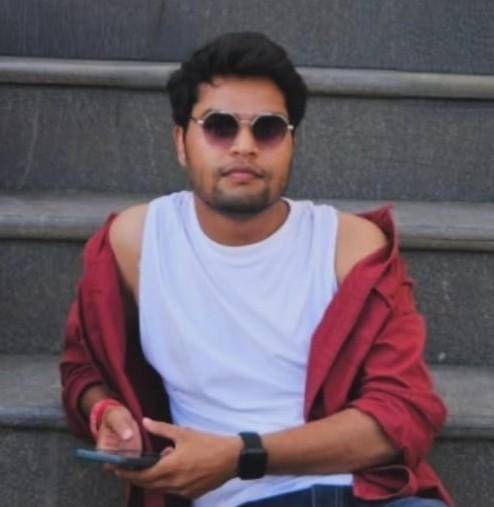The timeless legend of Dracula returns in 2025, but not in the way you might expect. Acclaimed Romanian filmmaker Radu Jude has brought a fresh and unconventional spin to the vampire mythos, steering away from traditional gothic horror toward something more thought-provoking, layered, and socially conscious. This new Dracula isn’t about jump scares or supernatural clichés — it’s a complex, darkly satirical piece that examines modern society through the lens of one of literature’s most enduring characters.
Story Overview
Unlike past adaptations that closely follow Bram Stoker’s 1897 novel, Radu Jude’s Dracula takes bold liberties with the story. Here, the vampire is not confined to the shadows of castles in Transylvania — he’s dropped into a modern, media-driven, hyper-connected world.
The plot weaves between Dracula’s encounters with contemporary Romania and the moral decay, political corruption, and societal absurdities that mirror the vampiric hunger for power and control.
This approach transforms Dracula from a simple monster tale into an allegory about greed, consumerism, and the manipulation of truth.
Radu Jude’s Signature Style
Radu Jude is known for blending biting satire with deep social commentary, as seen in his previous award-winning films. In Dracula, he continues his trademark mix of realism and absurdity, using sharp dialogue, deadpan humor, and unexpected tonal shifts.
The cinematography avoids glossy, horror-movie polish. Instead, it opts for grounded, almost documentary-style visuals, pulling viewers closer to the unsettling reality of the world he portrays.
Cast and Performances
The cast is a mix of Romanian talent and international actors, giving the film a unique global flavor.
- Lead Actor as Dracula – A restrained yet magnetic performance, portraying the vampire not as a fanged caricature but as a cunning manipulator whose power lies in persuasion and influence.
- Supporting Cast – From journalists to corrupt politicians, each supporting role represents a facet of modern society’s flaws.
- Ensemble Chemistry – The interplay between the characters feels natural, with moments of dark comedy breaking the tension.
Themes and Symbolism
Radu Jude’s Dracula is less about supernatural horror and more about the horror of reality.
Key themes include:
- Media Manipulation – Dracula thrives in a society where misinformation spreads faster than truth.
- Moral Decay – The film mirrors corruption in politics and the moral compromises people make for personal gain.
- Cultural Identity – It explores Romania’s place in global narratives and how local history is reinterpreted through modern lenses.
The vampire becomes a metaphor for systemic exploitation, feeding on societal weaknesses rather than just blood.
Pacing and Structure
This version of Dracula isn’t designed for audiences seeking fast-paced action. The film unfolds deliberately, with long takes, extended dialogues, and sudden bursts of absurd humor.
It challenges viewers to engage intellectually, rather than simply reacting to scares. Some might find this pacing slow, but for those willing to invest, the payoff is rich in subtext.
Cinematography and Visual Style
The film embraces natural lighting, realistic set design, and everyday locations — a stark contrast to the ornate, gothic castles of past adaptations.
Radu Jude uses:
- Static camera shots to heighten discomfort.
- Urban settings that contrast the mythic nature of Dracula with the banality of modern life.
- Minimal special effects, relying instead on atmosphere and performance.
Sound and Music
The soundtrack avoids typical horror tropes like ominous strings and sudden stingers. Instead, it uses sparse, sometimes ironic musical cues to underscore the absurdity of situations. Silence plays a big role, allowing tension to build naturally.
Audience Reception
Early festival screenings have sparked divided opinions:
- Praise – Critics have lauded the film’s originality, thematic depth, and Jude’s refusal to cater to mainstream expectations.
- Criticism – Some viewers found it too intellectual, slow-moving, or lacking the traditional thrills of a vampire movie.
Regardless, the conversation it has generated proves its cultural relevance.
How This Dracula Stands Out
This isn’t a remake trying to mimic past successes — it’s a reinvention.
Key differences include:
- A modern-day setting that grounds the supernatural in real-world politics and media.
- Satirical edge that makes audiences question their own roles in societal decay.
- A focus on ideas over scares, making it more of an art-house experience than a popcorn horror flick.
Also Read : Downton Abbey: The Grand Finale Trailer
Final Verdict
Radu Jude’s Dracula is not for everyone — and that’s exactly its strength. By refusing to conform to genre norms, it challenges what a vampire film can be.
For viewers seeking a cerebral, socially charged take on the Dracula legend, this is a must-watch. But for those expecting traditional horror, be prepared for something far more unsettling: the horror of reality itself.
Join our WhatsApp channel for more updates and information about celebrities and entertainment

I’m Atul Kumar, founder of Cine Storytellers and an entertainment creator with 5+ years of experience. I cover films, celebrities, music, and OTT content with a focus on accurate, ethical, and engaging storytelling. My goal is to bring readers trustworthy entertainment news that informs, inspires, and goes beyond gossip.
Discover more from Cine Storytellers
Subscribe to get the latest posts sent to your email.
